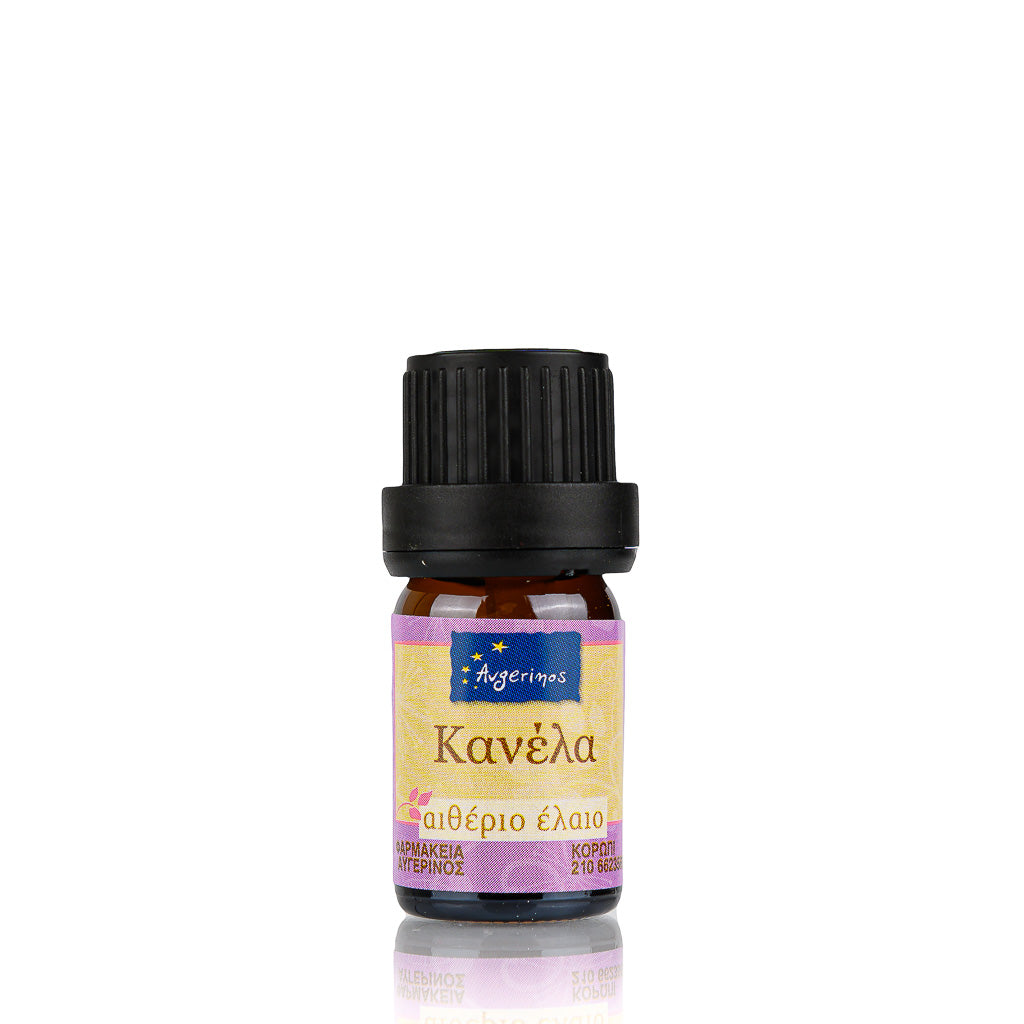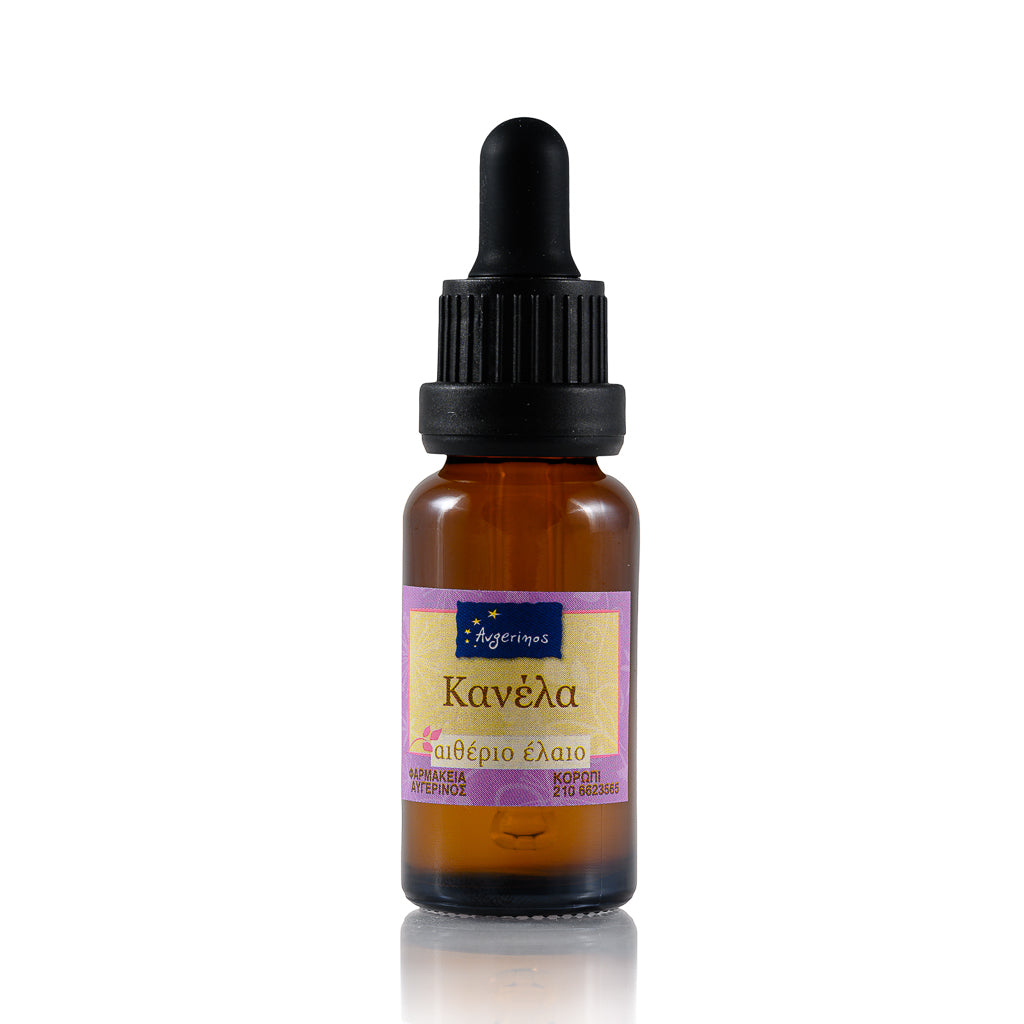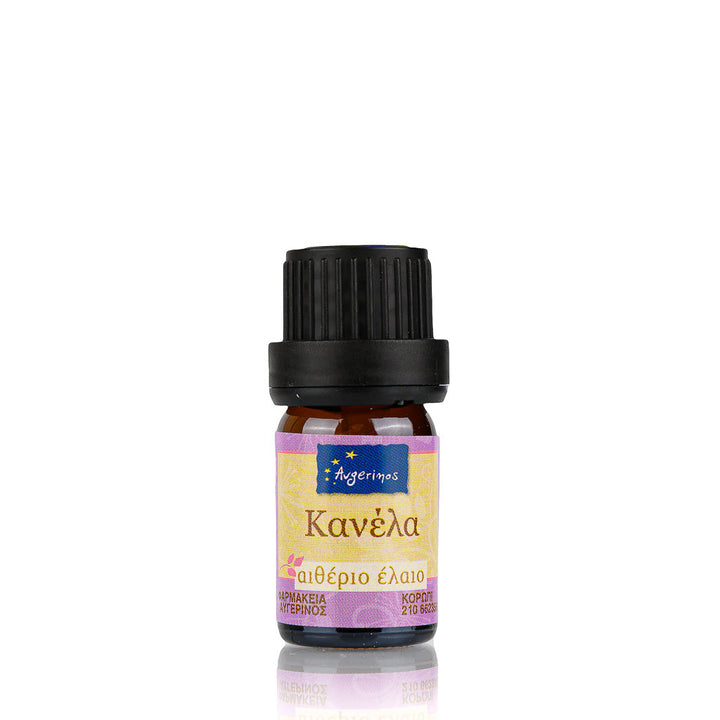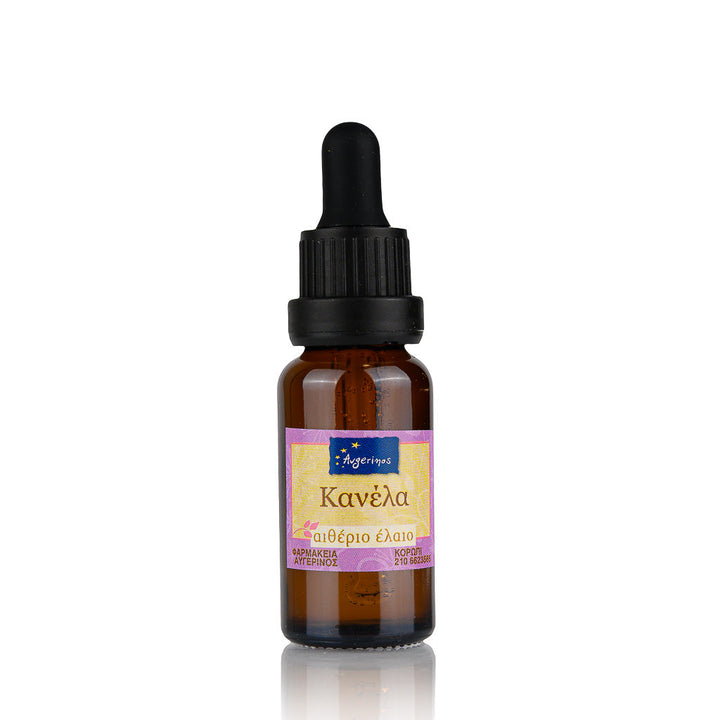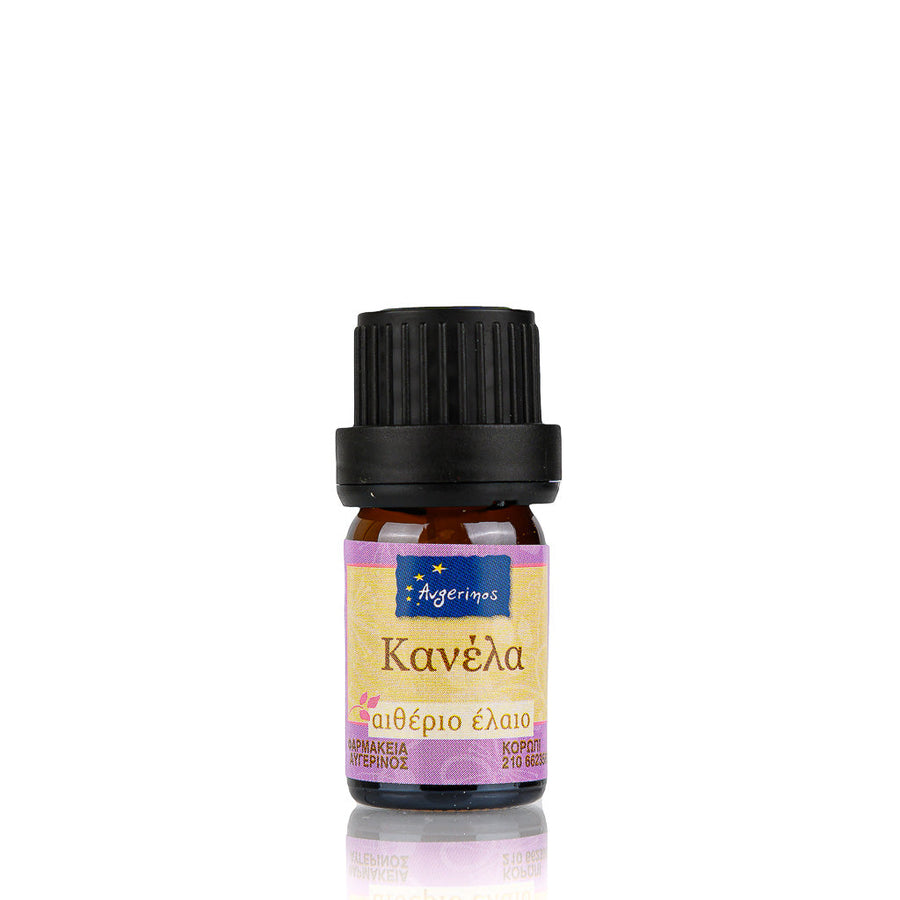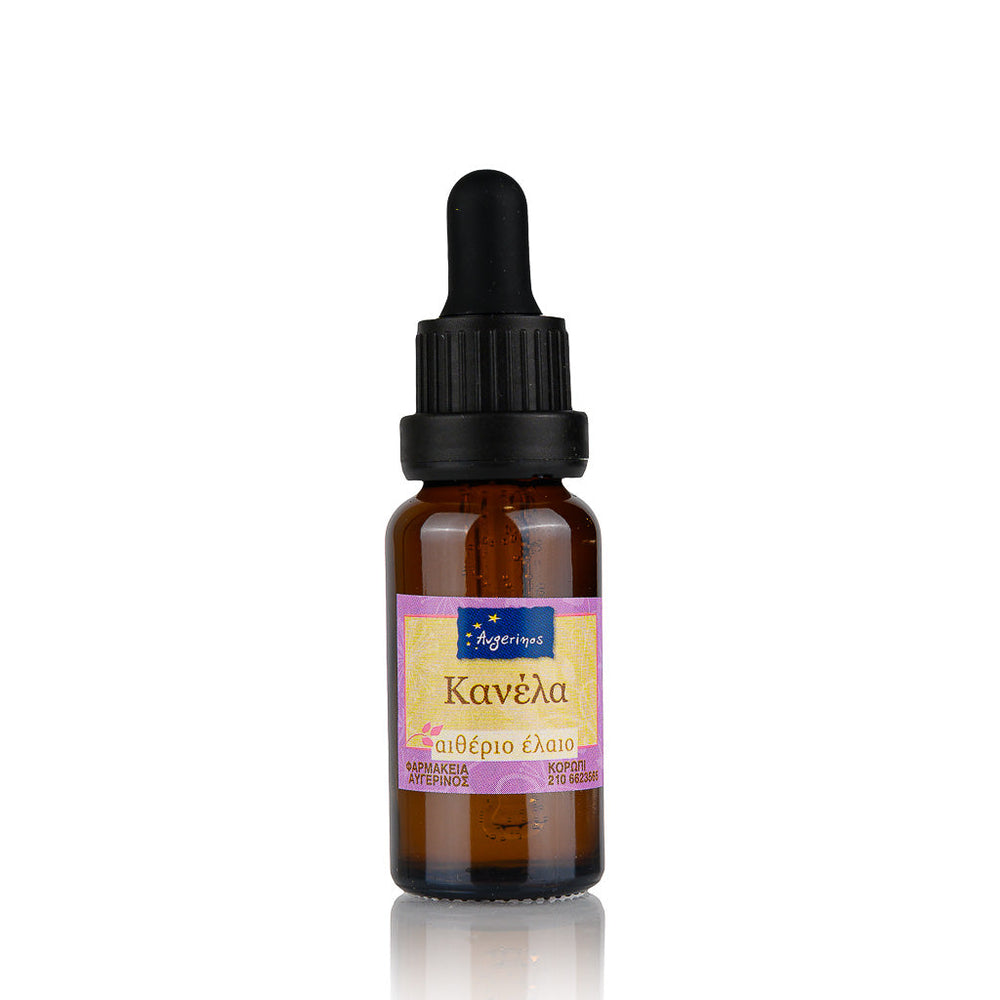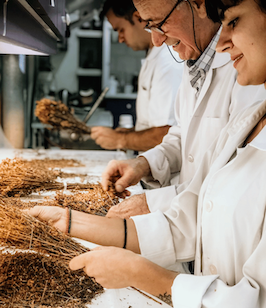Characteristics of Cinnamon
OR cinnamon (Cinnamomum verum or Cinnamomum zeylanicum and Cinnamomum cassia) is an evergreen tree native to Sri Lanka and South Asia. Its essential oil is extracted mainly from the bark or leaves of the tree. It has a warming, spicy and sweet aroma, and is distinguished by its stimulating, antiseptic and antibacterial properties.
History of Cinnamon
Cinnamon is one of the oldest known spices, with a history of thousands of years. It was used in ancient Egypt for embalming and as a flavoring, and is mentioned in Old Testament texts. The ancient Greeks and Romans highly valued it, while in the Middle Ages it was a luxury item and a symbol of wealth. In traditional medicine, it was used for digestive, respiratory and circulatory problems.
Ingredients
Cinnamon essential oil from the leaves and bark of the tree, using the hydrodistillation method.
Chemical composition
Cinnamon essential oil contains cinnamaldehyde as its main active ingredient, which gives it its characteristic aroma and antimicrobial activity. Other ingredients are eugenol, limonene, cinnamic acid and benzyl benzoate, which enhance its anti-inflammatory and warming properties.
Instructions for use
-
Topical application always diluted: Used in massage oils to warm muscles, stimulate circulation and treat cellulite. Must be diluted well (e.g. 1 drop in 10ml base oil), as it can cause irritation.
-
Aromatherapy: Can be diffused into the space for a feeling of warmth, activation and mood enhancement.
- It combines well with vanilla, coconut, and orange essential oils.
Use in Chinese Medicine and Ayurveda
In Traditional Chinese Medicine, cinnamon (Gui Zhi) is used to stimulate Qi, warm internal organs, and stimulate blood circulation. It is useful in cases of colds, pain, and body cold.
In Ayurveda, it is considered a warming herb that balances Kapha and Vata doshas. It is used for digestive problems, circulation, detoxification, and toning the nervous system.
Useful tips
The use of cinnamon essential oil should be avoided during pregnancy, breastfeeding and by children.
- Essential oils are intended for external use and are always used dissolved in a carrier oil or other catalyst.
- Avoid direct contact with skin, eyes and mouth.
- Προσφέρουμε ΔΩΡΕΑΝ επιστροφές σε όλα τα επιλέξιμα προϊόντα που δεν σχετίζονται με προσωπική υγιεινή, γαληνικά προϊόντα ή ειδικές παρασκευές. Αυτά τα είδη δεν μπορούν να επιστραφούν λόγω αυστηρών κανόνων υγιεινής και ασφάλειας.
-
Έχετε δικαίωμα να επιστρέψετε οποιοδήποτε επιλέξιμο προϊόν εντός 14 ημερολογιακών ημερών από την ημέρα που παραλάβατε την παραγγελία σας.
- Products must be intact, unused, and in their original packaging for us to accept their return. Proof of purchase is also required.
- Μετά την παραλαβή και τον σχολαστικό έλεγχο των προϊόντων, η επιστροφή χρημάτων γίνεται εντός 5–10 εργάσιμων ημερών.
- For purchases up to €50, returns may be issued as a gift card so you can benefit immediately from your next purchase.
- Return process: Submit a request from footer with one click at Request a return & δηλώστε το προϊόν επιστροφής. '
- ΔRead our full Returns Policy on our website.
- Παρακαλούμε μην αποστείλετε κανένα προϊόν πριν λάβετε το σχετικό shipping label από εμάς.
Χρόνος & Ώρες Παράδοσης
Χρόνος Παράδοσης: (υπολογίζετε ως ημερομηνία έναρξης την ημερομηνία αποστολής και όχι παραγγελίας και λαμβάνονται υπόψη μόνο οι εργάσιμες ημέρες).
- Αστικά κέντρα, Αττική & Πρωτεύουσες Νόμων (συμπεριλαμβανομένων της Κρήτης) : 1-3 εργάσιμες ημέρες
- Απομακρυσμένες περιοχές & Νησιωτικοί προορισμοί: 2-5 εργάσιμες ημέρες
- Ημέρες παράδοσης είναι από Δευτέρα - Παρασκευή
- Ώρες Παράδοσης: 9:00πμ.- 18:00 μμ. (κατά Προσέγγιση)
Έξοδα Αποστολής & Αντικαταβολή
- With BOX NOW, shipping costs are €2.95.
- Με COURIER tα έξοδα αποστολής για όλη την Ελλάδα είναι 4.50€.
- Cash on delivery is FREE
- Οι τιμές ισχύουν έως 2kg, κάθε επιπλέον κιλό χρεώνεται με 1€
Το avgerinospharmacy.gr δε θα μπορεί να θεωρηθεί υπεύθυνο των συνεπειών που οφείλονται σε καθυστέρηση παράδοσης ή απώλεια του δέματός σας εκ μέρους του μεταφορέα ή λόγω ανωτέρας βίας. Σε περίπτωση μη λήψης του δέματος στις αναφερόμενες προθεσμίες, πραγματοποιείται έρευνα προς τον μεταφορέα και διαρκεί ως και 15 ημέρες. Κατά τη διάρκεια αυτής της περιόδου, καμία αποζημίωση ή επαναποστολή δεν θα μπορεί να λάβει χώρα.
Για όλες τις λεπτομερειες μπορείτε να διαβασετε την πληρη πολιτικη αποστολών & μεταφορικών μας εδω.
4+1 gift!
Buy 4 Get 5




